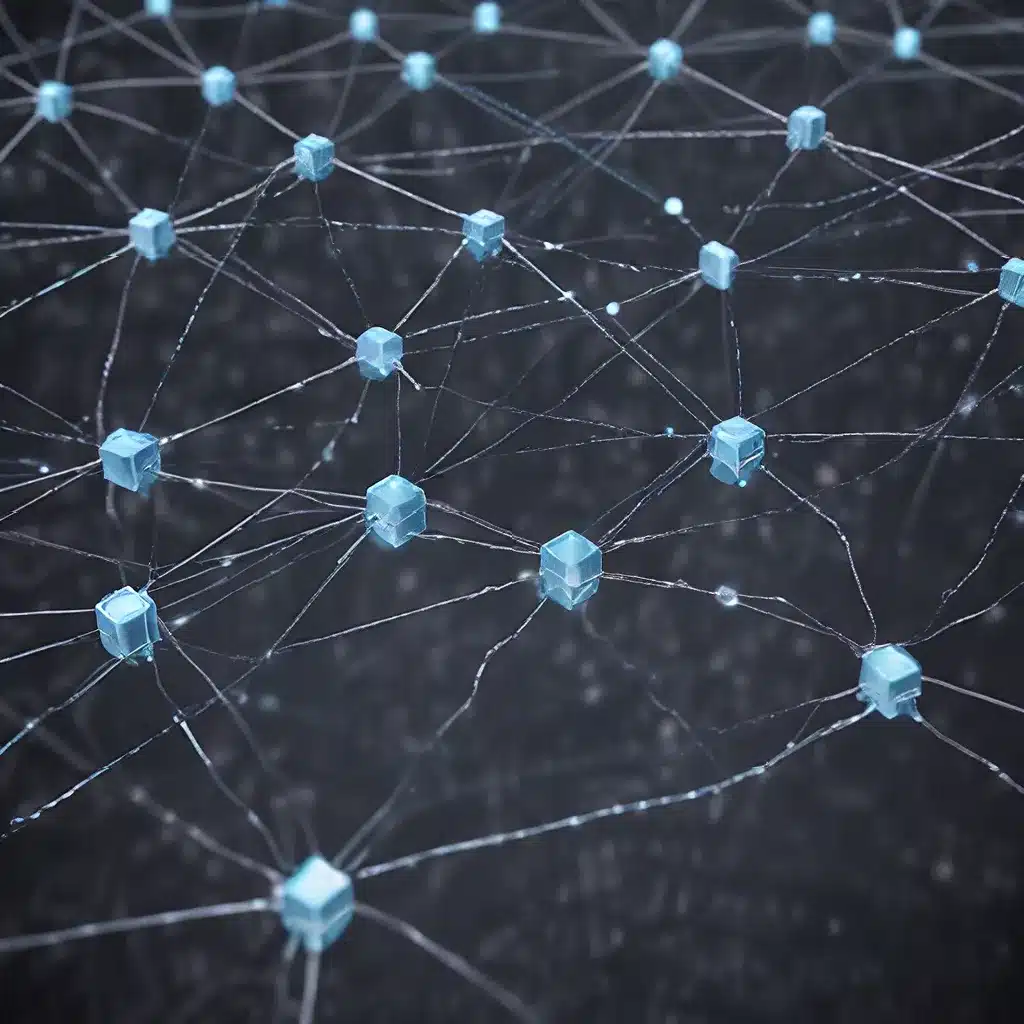
Sensor Networks and the Challenges of Energy Efficiency
The exponential growth of the Internet of Things (IoT) has led to a surge in the deployment of sensor networks across various industries and applications. These networks, consisting of interconnected sensor nodes, play a crucial role in data collection, analysis, and decision-making processes. However, the effective management and optimization of sensor network energy consumption have become a pressing challenge, as these nodes are often powered by limited energy sources, such as batteries or energy harvesting mechanisms.
Maintaining the operational lifetime of sensor networks is essential, as it directly impacts the reliability and sustainability of the data they provide. Nodes that deplete their energy reserves prematurely can lead to network coverage gaps and data loss, hindering the overall effectiveness of the system. This challenge has spurred the development of innovative distributed optimization techniques that aim to extend the network lifetime while ensuring reliable and efficient data collection.
Distributed Optimization Approaches for Sensor Network Lifetime Extension
One of the key approaches to addressing the energy efficiency challenge in sensor networks is the distributed optimization of network resources. This approach leverages the inherent decentralized nature of sensor networks, where each node makes autonomous decisions based on local information, rather than relying on a centralized control mechanism.
PIES: An Energy-Saving Technique for Mobile Ad-Hoc Networks
The PIES (Power-Efficient Information Evaluation Scheme) is an innovative energy-saving technique that can be integrated with existing routing protocols in mobile ad-hoc networks (MANETs) and wireless sensor networks. PIES operates by helping the routing protocols make energy-conscious decisions without modifying their core functionality.
Research has shown that in wireless ad-hoc and sensor networks, the largest portion of node energy consumption is due to the time spent in the idle state, rather than active data transmission or reception. PIES aims to address this issue by optimizing the node’s energy consumption behavior while preserving the performance of the routing protocol.
SERENA: Scheduling Router Nodes for Energy Efficiency
Another approach to distributed optimization in sensor networks is the SERENA (SchEdule RoutEr Nodes Algorithm), which focuses on the energy efficiency of broadcast routing. In wireless ad-hoc networks, each node operates on a limited energy source, making energy consumption a critical factor in the network’s operational lifetime.
SERENA is designed to schedule the activation and deactivation of router nodes within the network, effectively reducing the overall energy consumption while maintaining the network’s broadcast routing capabilities.
Balancing Energy Consumption across the Network
Another key aspect of distributed optimization in sensor networks is the balancing of energy consumption across the network. This approach aims to prevent the premature depletion of specific nodes, which can lead to coverage gaps and network partitioning.
By distributing the energy load more evenly among the sensor nodes, the overall network lifetime can be extended, ensuring a more reliable and resilient data collection and processing system. This can be achieved through techniques such as dynamic node clustering, adaptive transmission power control, and energy-aware routing protocols.
Sensor Network Applications and the Importance of Energy Efficiency
The need for energy-efficient sensor networks is particularly crucial in a wide range of IoT applications, where reliable and continuous data collection is paramount. Some key application areas include:
-
Environmental Monitoring: Sensor networks deployed in remote or inaccessible areas for monitoring environmental conditions, such as temperature, humidity, air quality, and wildlife tracking, require extended operational lifetimes to ensure comprehensive data collection and analysis.
-
Industrial Automation: Sensor networks in industrial settings, such as manufacturing plants, smart factories, and logistics hubs, enable real-time monitoring, predictive maintenance, and optimization of production processes. Achieving energy efficiency in these networks is crucial for uninterrupted operations and cost savings.
-
Smart Cities: Sensor networks in urban environments support a wide range of smart city applications, including traffic management, infrastructure monitoring, and public safety. Optimizing the energy consumption of these networks ensures long-term sustainability and reliable data collection for informed decision-making.
-
Healthcare and Telemedicine: Sensor networks in healthcare and telemedicine applications, such as remote patient monitoring and ambient assisted living, require efficient energy management to enable continuous data collection and uninterrupted service delivery.
In each of these scenarios, distributed optimization techniques for sensor network lifetime extension play a crucial role in unlocking the full potential of IoT and enabling innovative applications that can benefit individuals, communities, and industries.
Security Considerations in Sensor Network Design
While the focus on energy efficiency is paramount, it is equally important to address the security challenges inherent in sensor network design. As these networks become increasingly ubiquitous, they also become prime targets for cyber threats, such as data breaches, unauthorized access, and denial-of-service attacks.
Implementing robust security measures in sensor networks requires a multi-layered approach, considering factors such as node-level security, network-level security, and end-to-end data protection. This includes techniques like secure node authentication, encrypted data communication, and intrusion detection systems.
By integrating security considerations into the distributed optimization of sensor network lifetime extension, organizations can ensure the integrity, confidentiality, and availability of the critical data collected by these systems, safeguarding both the network and its applications.
Conclusion: Embracing Distributed Optimization for a Sustainable IoT Future
As the IoT ecosystem continues to expand, the importance of energy-efficient sensor networks cannot be overstated. Distributed optimization techniques, such as PIES, SERENA, and energy consumption balancing, offer promising solutions to extend the operational lifetime of these networks while maintaining their reliability and resilience.
By incorporating these advancements into the design and deployment of sensor networks, organizations can unlock the full potential of IoT and drive innovation across a wide range of industries and applications, from environmental monitoring to smart city initiatives and healthcare applications.
As we embrace the future of sensor networks and the IoT, the focus on energy efficiency and distributed optimization will be crucial in shaping a sustainable and resilient IoT ecosystem that serves the needs of individuals, communities, and industries worldwide**.